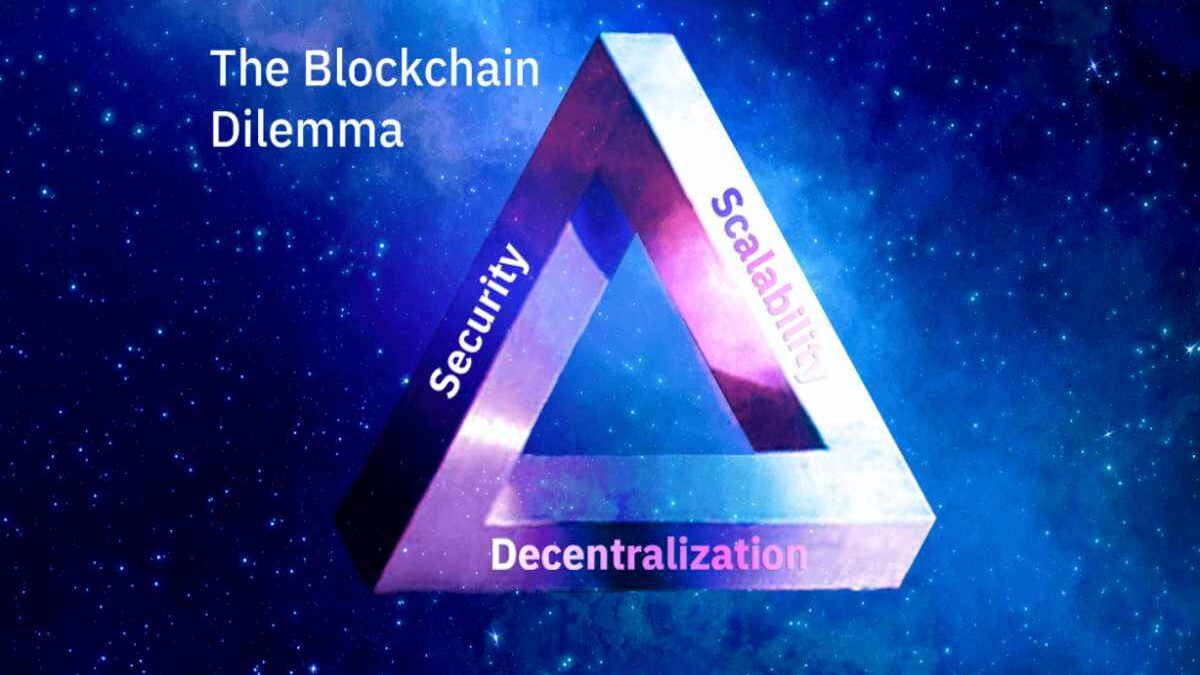Blockchain Trilemma can only process a inadequate number of transactions per second. For instance, the Bitcoin network can practise about seven dealings per second. However, suppose blockchain Trilemma technology is to be accepted globally. In that case, it needs to process much more data at higher speeds so that extra people can use the network without it flattering too slow or expensive. However, the basic design of many decentralized networks means increased scalability tends to weaken decentralization or security. It is what is known as the blockchain triad. Also, developers looking to solve this problem are experimenting with different agreement mechanisms and scalability solutions. Such as sharding, sidechains, and stateful channels.
Introduction
In a basic sense, a blockchain Trilemma is a distributed digital database. The data blocks arranged in chronological order. The blocks are interconnected and protected by cryptographic proofs. Applying this technology in different industries is already changing how we work and live.
The idea is that decentralized and safe blockchain Trilemma enable a world without relying on third parties to make networks or markets work. However, experts generally agree that a fundamental problem must be solved if this technology is more widely adopted. The problem in query is known as the “blockchain triad”.
The term popularize by Vitalik Buterin, co-founder of Ethereum. To brand sense, you must be conscious of three elements desirable in a blockchain: decentralization, security, and scalability. The blockchain Trilemma triad refers to the idea that it is difficult for blockchains to achieve optimum levels of all three properties concurrently. Increasing one usually leads to a flagging of the other.
What is Decentralization?
Bitcoin and similar blockchain networks are decentralizing by design. The whole structure is such that no single person or institution is responsible. On the contrary, it has a decentralized system. The network layer is open to anybody who wishes to participate. As a result, control is wholly distributed rather than in the hands of a single entity. Everyone has access to the same data. If someone tries to cheat the system by changing the records in their favour, the remaining participants will reject the erroneous data.
It is also pretty technical, but let’s take the Bitcoin network as an example. There is no controlling third party—compare this with the need for banks in the financial system. Banks establish trust among transactors and ensure that all records are kept accurately. However, the Bitcoin blockchain shares all this data with everyone on the network to verify and validate. Also, it was before existence added to the digital database. The outcome is a system that can exist without third parties.
What is Blockchain Security?
It doesn’t matter how decentralized an insecure blockchain is. A good blockchain network must be resistant to attacks from malicious entities. Central systems take their security from the fact that the system is closed. Whoever is in control can ensure that the data is free from interference. But how is this attained in a decentralized system where anyone can join?
It’s a complex topic, but we can refer to Bitcoin as an example of decentralized blockchain security. The Bitcoin blockchain uses a mixture of cryptography and a network consensus mechanism called Proof of Work (PoW). Each block has some digital signature (or hash) in cryptographic terms. Each block of data is bound to be tamper-proof because any change changes the hash of a partnership. The rest of the network will quickly identify any attempt to manipulate the data.
The PoW consensus mechanism is another piece of the puzzle. It helps secure the cryptocurrency ledger. Understanding proof of work is an article in itself, but keep in mind that for our purposes, members of the network can only verify and add new transactions to the ledger through an activity known as mining. It involves using computational power to solve a math puzzle. Part of the process needs these computers to perform many hashes. It raises the issue of scalability, as the PoW mechanism is secure but relatively slow.

